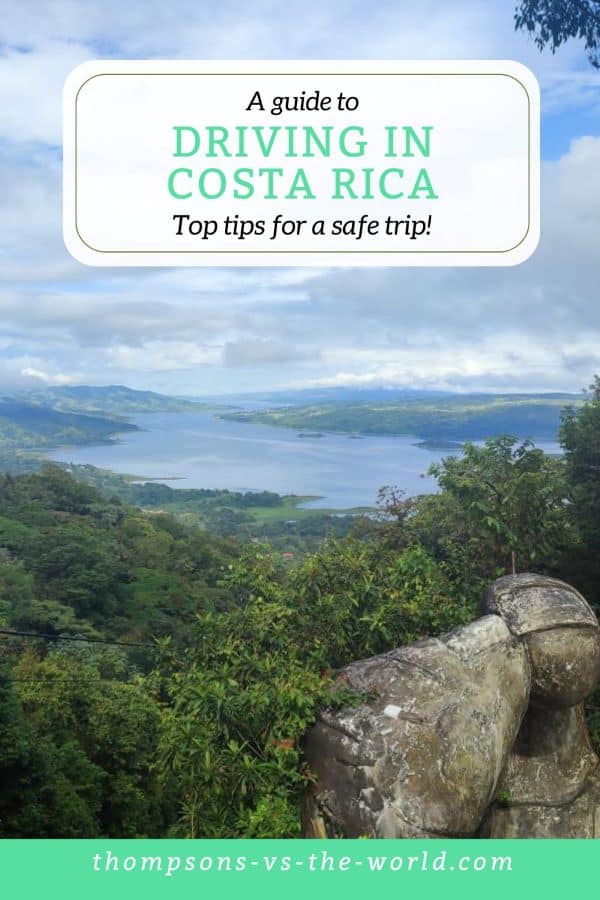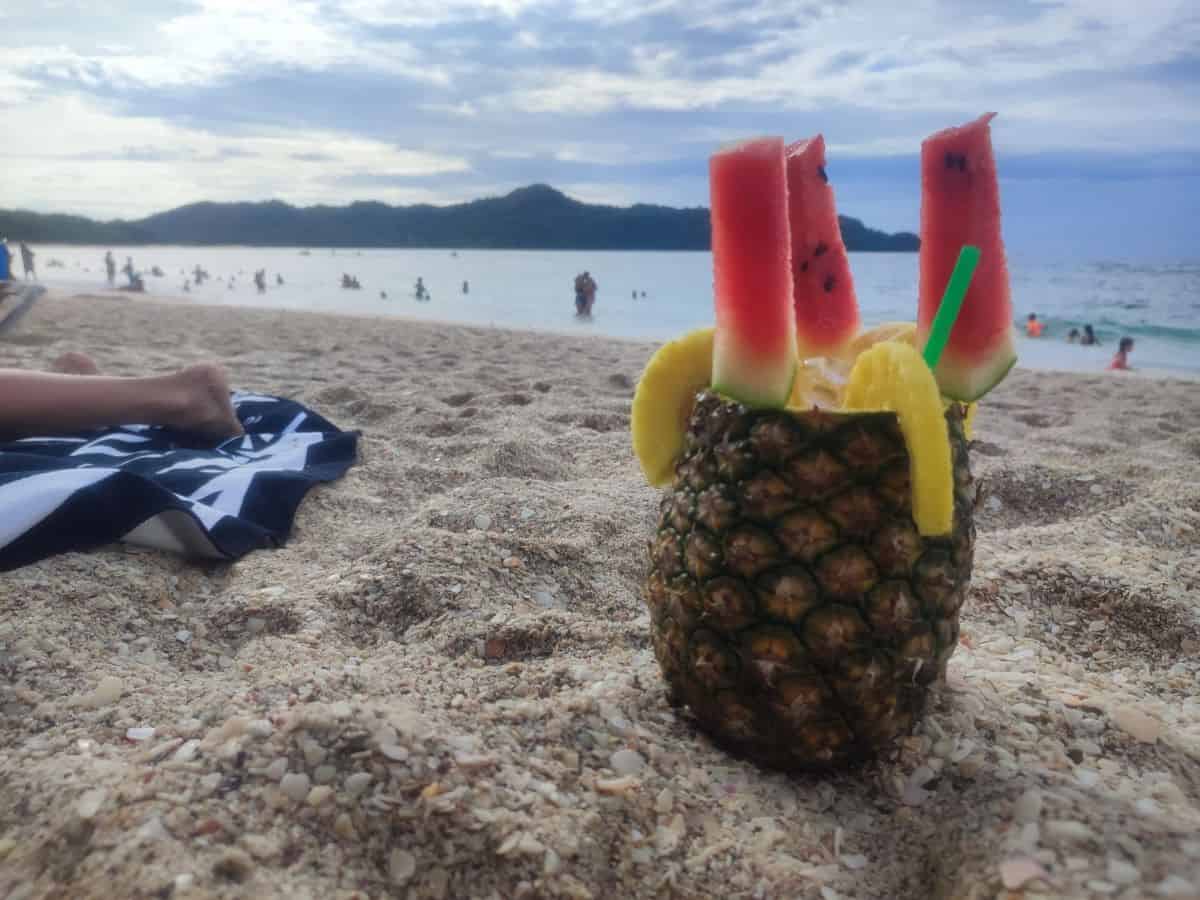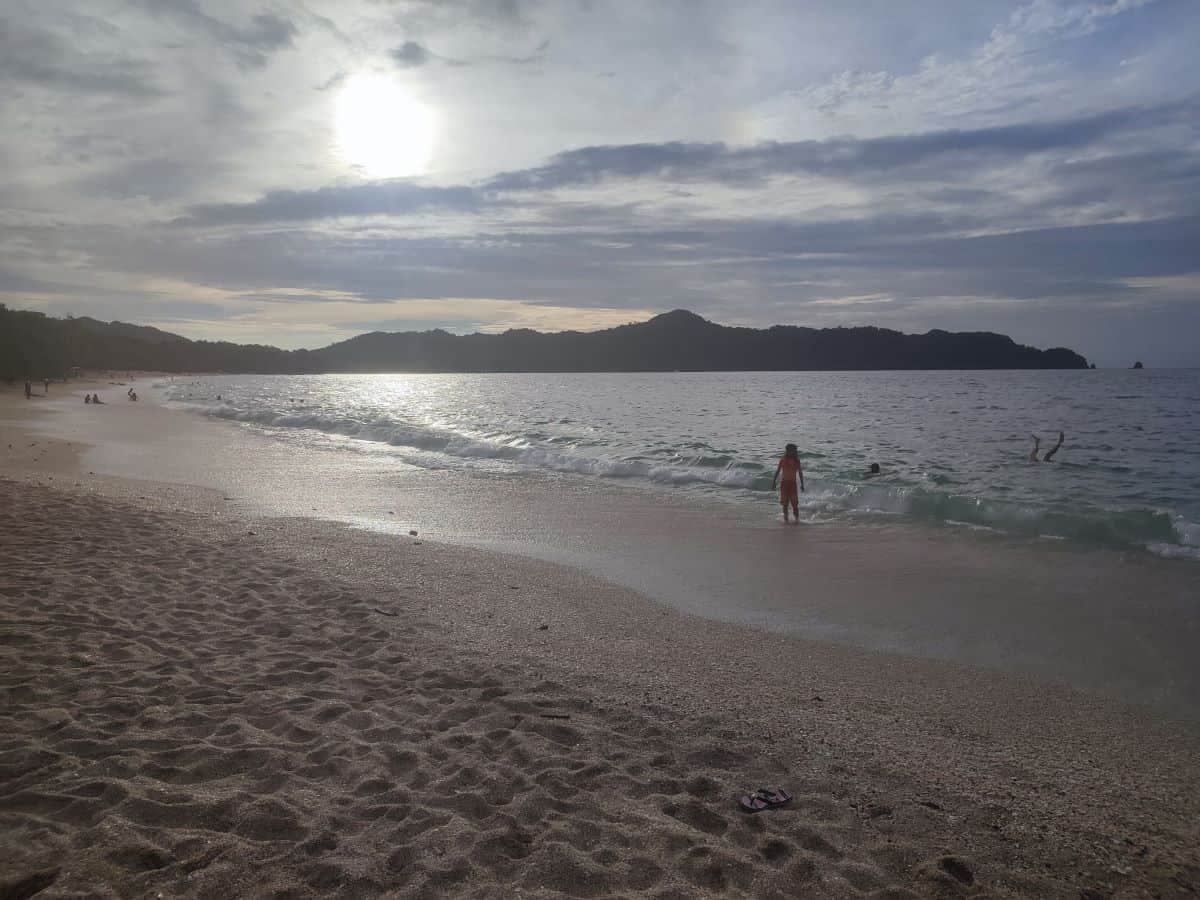Is driving in Costa Rica safe?
Thompsons vs the World contains affiliate links and is a member of the Amazon Services LLC Affiliates Program. Making a booking via these links will mean that we receive a small fee but this is at absolutely no cost to you. The price you pay will always remain the same. For more information please see our Privacy Policy.
When it comes to travelling with kids, opting for a hire car is often by far the most convenient (and sometimes most affordable) option. But it can also be REALLY daunting – turning up in a new country with little to no idea of what it might actually be like to navigate on your own.
So if you’re planning out your itinerary for Costa Rica you might be seriously thinking about the pros and cons of hiring a car. So, the all important question here is: is driving in Costa Rica safe?
During the (extended) planning phase for our travels in Costa Rica I was ADAMANT that we weren’t going to hire a car. Attempting a river crossing in a hire car had ‘divorce level argument’ written all over it!
But in the end, hiring a car is exactly what we ended up doing. For several weeks of travel through Costa Rica with two young children in tow, it was just by far the easiest option.
And, in the end, much less scary than I thought it might be (and crucially, ZERO divorce-inducing river crossings to navigate!). If you’re worried about whether driving in Costa Rica with kids is safe, here’s what we learned – from road conditions, to car seats for kids, plus a host of top tips to make you feel more confident about driving through this amazing country.
Table of Contents
- How to get around in Costa Rica (and why it makes sense to hire a car)
- Renting a car in Costa Rica
- Driving in Costa Rica: Key Info
- Car Seats: Much better to bring your own
- What are the roads in Costa Rica like?
- Weather and Animals Everywhere: Hazards on the Costa Rica roads
- River crossings in Costa Rica
- Is it safe to drive at night in Costa Rica?
- Tips for driving in Costa Rica
- Planning a family trip to Costa Rica?

How to get around in Costa Rica (and why it makes sense to hire a car)
We thought we could navigate Costa Rica for several weeks without the need for a hire car. In most countries we’ve travelled to around the world we’ve coped fine using a mix of public transport and taxis.
However. After the first week or so in Costa Rica we’d done a full 360 on this decision. It just wasn’t really practical or affordable to try and traverse the country by bus and shuttle and a hire car quickly became the best option for us.
For well-travelled routes, the public bus services are great and will get you to your destination in relative comfort and on a budget. We used buses to get between San Jose and Manuel Antonio and then again across the Caribbean Coast and back from Cahuita to San Jose for our return flight home.
They were always on time and were a cost-effective way of getting around.
For any route that’s even slightly off-the-beaten track though you will struggle to navigate via public bus. There is a booming shuttle business in Costa Rica that moves tourists between destinations in either shared or private shuttles (minibuses essentially).
These cover almost the whole country – but they do come at a cost. As an example, we paid over £200/$US270 for one journey from Sarapiqui to the Caribbean Coast for the four of us. In a SHARED shuttle.
If you’re moving around or spending a significant amount of time in Costa Rica, the cost of shuttles really adds up (and very quickly!).
Hiring a car instead, particularly as a family of 4-5, actually works out much cheaper than the cost of shuttles. We paid a total of £560/US$760 for nine days of car hire for one stint of travel in Costa Rica.
This got us from Quepos all the way up the Nicoya Peninsula and then over to La Fortuna. Which, given the stops we made, would have worked out as four separate shuttle bookings.
Renting a car in Costa Rica is:
- The most affordable way to travel for a family of 4+
- Incredibly convenient: straight from door-to-door, with no carting luggage around
- The best way to get the most from a short stay
- The only real way to venture to less well-trodden destinations

Want the find the best places to stay in Costa Rica?
Check out our in-depth guide to the BEST hotels, eco-lodges and beachfront getaways for families (on any budget!)
Renting a car in Costa Rica
There are car rental places across the major destinations in Costa Rica. These are easily found at the following locations:
- San Jose (including downtown and the airport)
- Liberia Airport
- La Fortuna
- Tamarindo
- Quepos
There are loads of different companies offering car rentals; we had a great experience throughout Central America with DiscoverCars and would thoroughly recommend them. They work with a range of companies to locate the right car for you and their customer service is excellent.
And one absolute top tip: If you can get yourself out of San Jose BEFORE hiring a car, this will make your experience much less stressful.
I would highly recommend getting a shuttle or public bus to your first destination and hiring a car there as navigating the traffic and streets in San Jose is not easy!
If you start and end your trip in well-connected spots such as Manuel Antonio or La Fortuna you’ll be able to pick up/drop off rental cars there and easily use alternative transport to/from the airport.
Driving in Costa Rica: Key Info
It’s always worth making sure you’re familiar with some of the basics rules for driving overseas. For Costa Rica, some key facts to be aware of include:
- Legal Driving Age: 18 (although usually a minimum of 21 to hire a car)
- Driving Side: Right hand side of the road (same as the US and Canada)
- Gas Stations: These are NOT self-service – an attendant will ask how much (in Colones) you want and will fill your car for you
- Seatbelts: mandatory for everyone in the car
Car Seats: Much better to bring your own
Now we’ve done our fair share of lugging kids’ car seats around the world and I know first-hand that this is NO FUN AT ALL. But if you’re at all concerned about the quality of car seats in Costa Rica then give your worry-levels a break and bring your own.
When you’re hiring a car anywhere in the world it’s pot luck what the car seats for kids are going to be like. And Costa Rica is no different. Yes, you might get lucky and get a car rental with amazing, brand new, age appropriate car seats.
But if that’s not the case then it does leave you a bit stuck; don’t expect to find many places to buy car seats outside San Jose. Plus, there is usually a charge from car rental companies for care seats so you’d need to plan this in your budget.
What are the roads in Costa Rica like?
The main highways that connect major tourist destinations in Costa Rica are wide, paved roads that make for an easy drive. Outside of San Jose we found that the traffic was pretty minimal, with the exception of the odd peak time around Tamarindo.
But once you venture off the main highways it can be a very different story! The side roads that connect to smaller towns and villages can often be unpaved and VERY uneven.
This doesn’t stop you from driving there but it does slow down journey times and means that you need to drive very, very carefully. There are MASSIVE potholes in some roads that you really don’t want to hit at any speed!
Popular tourist routes
The following Costa Rica roads all follow main, paved highways and are very easy to navigate in a hire car:
- San Jose-Jaco-Quepos-Manuel Antonio (beware of the manic traffic in San Jose though)
- Manuel Antonio-Tamarindo
- Liberia-Tamarindo
- Liberia-La Fortuna
- Tamarindo-Monteverde and/or La Fortuna
- La Fortuna-San Jose
- La Fortuna-Sarapiqui-Puerto Limon
- Puerto Limon-Cahuita-Puerto Viejo de Talamanca-Manzanillo
The roads to the smaller destinations on the Nicoya Peninsula such as Nosara, Samara, Montezuma and Cabuya are smaller roads, unpaved in parts and do in places have big, chunky potholes to navigate.
One of the resources I found INCREDIBLY helpful in our planning was this brilliant website that details all of the main highways in Costa Rica and rates them based on the road conditions, terrain, whether there are river crossings, traffic levels, tolls and if you need a 4×4 vehicle for access.
Weather and Animals Everywhere: Hazards on the Costa Rica roads
In rainy season in particular the incredibly heavy downpours of rain can be VERY challenging to drive in. There were several times that we had to stop our journey to wait the rain out.
These deluges can also cause flash flooding in some parts of the road network – be aware that this can increase your journey time significantly (as it did for us on at least a couple of occasions!).
Plus, remember all that wildlife that you’ve come to Costa Rica to see? Some of it may well be in the road at times so slow down and keep an eye on your surroundings.
There are also a LOT of dogs in Costa Rica; even those with loving owners don’t tend to be fenced in on properties so they do roam the streets in towns. Drive slowly through housing areas as the dogs (and sometimes kids!) can often be playing or wandering on the roads and can take you by surprise if you’re not careful.
River crossings in Costa Rica
My main bit of advice for river crossings? Avoid them wherever you can. Few of us tourists are experienced in driving cars through fast-moving rivers. Yes, you might be fine, but the stress and the risks involved are really not worth it.
The majority of river crossings in Costa Rica are on the Nicoya Peninsula, in the more off-the-beaten-track locations. Plan your journeys in advance and for the most part you should be able to avoid them.
Depending on the time of year you visit this may also not be an issue at all; several routes only have river crossings during the rainy season when the water levels are high.
Is it safe to drive at night in Costa Rica?
The short answer to this is yes; is it safe to drive in Costa Rica at night as long as you drive carefully and are aware of potential hazards.
Very few of the roads in Costa Rica have any streetlights or illuminated road markings. And as we’re already been through, the road conditions can vary wildly. If it’s a route you’ve driven before and you have at least some knowledge of the conditions, then you’re likely to be fine.
If you’re driving to a completely new destination with no real idea of the conditions then it is strongly recommended to drive in the daylight.
We did drive frequently at night in Costa Rica; but only in locations where we had a base for a few days so had a sense of the roads and the surroundings. For all our longer distance travel we drove during daylight hours.
Tips for driving in Costa Rica
- You should get a map of the main driving routes in Costa Rica when you hire your car; keep this handy as when phone signal is weak this might be the only way you have to navigate!
- If you can hire a car/return it AWAY from San Jose then do so; this will avoid you having to tackle the pretty awful traffic in the capital
- Opt for a 4×4 or SUV if you possibly can; you will 100% encounter massive potholes and unpaved roads at some point and then you will be grateful for the extra height and power.
- Check ahead to make sure the accommodation you’ve got booked has parking available; not all of the smaller B&Bs and guesthouses have the space.
- Waze tends to work better than Google Maps in Costa Rica
So, is it safe to drive in Costa Rica? The answer to this is a definite YES. Navigating the road network here was so much easier than we’d imagined. In fact, there are several countries in Europe where I absolutely felt like driving was less safe than in Costa Rica (hello, Italy).
Plan your route in advance, take it slow and remember to stop often to enjoy the amazing vistas that Costa Rica throws at you round every corner.
Planning a family trip to Costa Rica?
If you’re planning a family travel adventure to Costa Rica, then download our completely FREE Costa Rica Travel with Kids Guide right here. It has all the info you need to plan the perfect trip, including:
- Packing lists
- Two-week itinerary curated specifically for family travel
- Costs
- Where to stay
- What to do
Sign up below and download your pdf version now! We promise never to send you any spam rubbish and we will never pass your details on to anyone else at all.







